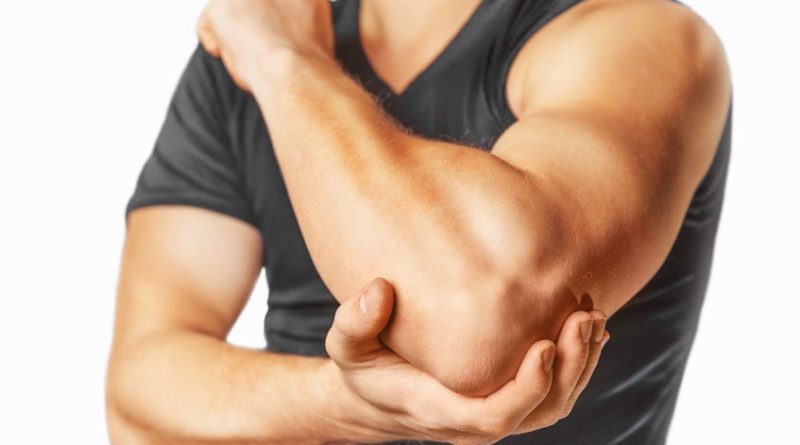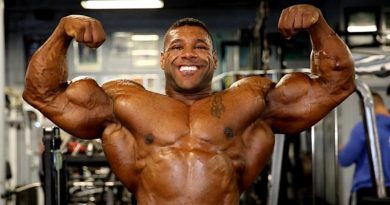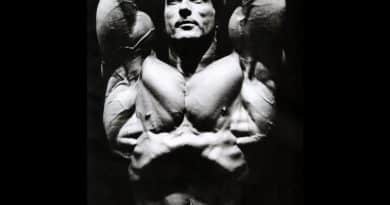Tennis Elbow: A Bodybuilder’s Nightmare
If some of you read an earlier article I wrote about training through injuries, then you would know that for several weeks I have had pain in my upper forearm which I thought was my brachioradialis. Well, that wasn’t the case. I come to find out it’s tennis elbow.
Now, some of you might not be familiar with tennis elbow, and while I was a competitive tennis player all the way through college, this injury has nothing to do with it as it’s my left arm. All of this pain and discomfort stemmed from a set of reverse curls when mid-set I felt a sharp pain. I finished my workout and chalked it up that I must have pulled something and I’d be fine in a couple days. That wasn’t the case.
Disclaimer: This article is for informational purposes only and is not meant to treat or diagnose any condition. It is recommended that you speak with your doctor before starting any exercise program, changing your daily nutrition, or adding any supplements to your regimen.
Table of contents
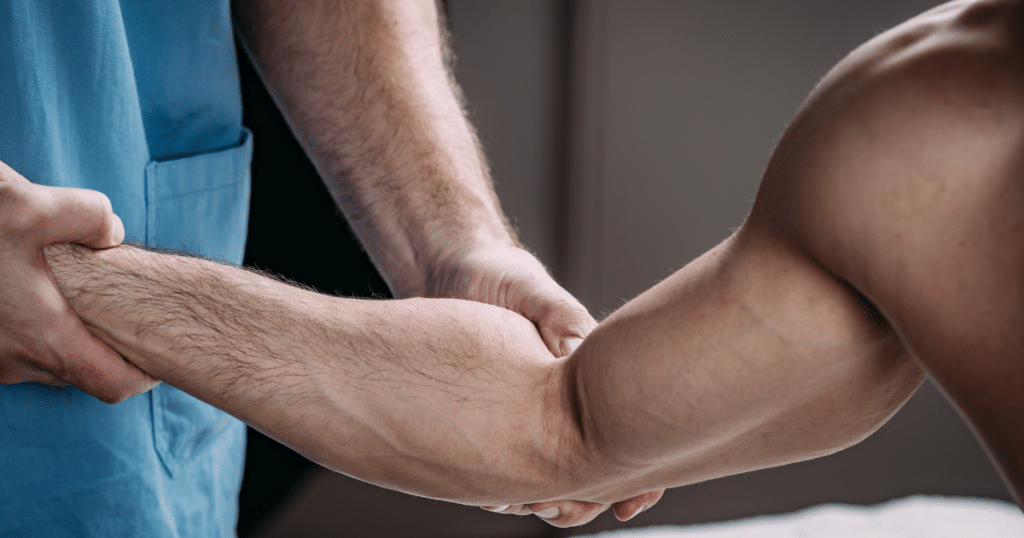
Tennis Elbow… AKA Lateral Epicondylitis
No, I’m not speaking a different language, the medical term for tennis elbow is lateral epicondylitis. What causes this is the small muscles of the forearm towards the elbow become irritated. This can be due to overuse, repetitive movements, trauma to the area, and overworking due to a heavy weight just to name a few.
In my case, it was literally the first time doing reverse curls in months and in my opinion of the situation, I probably went a little too heavy to start off my working sets of reverse curls which caused the injury. Now, some people might think, “it’s basically just tendonitis, I can work through it.” Trust me, you won’t want to work through it. Simply clenching your fist without any weight in your hand is enough to irritate the area and cause mild to severe pain. What you also might not have known, is that many hardcore bodybuilders and elite athletes suffer from or have suffered from lateral epicondylitis during their career—not just tennis players.
In the early stages of tennis elbow, you may have some soreness and possibly some minor inflammation. Many would assume it’s muscle soreness or DOMS (delayed onset muscle soreness) setting in from a previous workouts. However, many will soon find that things as simple as picking up a cup of coffee or turning a doorknob is enough to shoot pain into the affected area and cause you to think twice about if it’s truly muscle soreness or DOMS. The pain you feel generally starts right at the elbow and can travel all the way down to the hand or can simply stop at the forearm. In my case, depending on the movement, I can feel pain both in my forearm as well as all the way down to my hand.
What is Tennis Elbow?
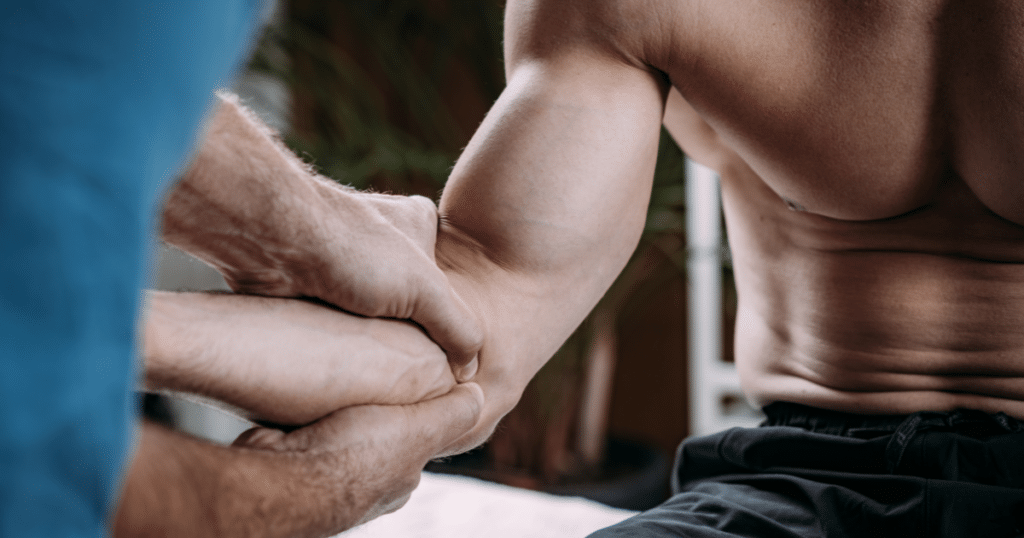
Tennis elbow is a condition that causes pain and inflammation on the outer part of the elbow. Despite its name, tennis elbow is not limited to tennis players; it can affect anyone who repetitively uses their forearm muscles and tendons, particularly those involved in gripping and lifting activities.
The condition typically develops due to overuse or strain of the tendons that attach to the lateral epicondyle, which is a bony bump on the outer part of the elbow. These tendons connect the forearm muscles to the upper arm bone. Activities that involve repetitive gripping, twisting, or lifting motions of the wrist and forearm can lead to small tears in these tendons, causing pain and inflammation.
Common symptoms of tennis elbow include:
- Pain or tenderness on the outer part of the elbow.
- Weakness in the forearm.
- Pain that worsens with gripping or lifting objects, shaking hands, or turning doorknobs.
- Stiffness in the elbow, particularly in the morning or after periods of rest.
The treatment for tennis elbow usually involves a combination of rest, icing, and over-the-counter pain medications to reduce inflammation and pain. Physical therapy exercises that focus on strengthening the forearm muscles and improving flexibility can also be beneficial.
In more severe cases or when conservative treatments are not effective, a doctor might recommend more advanced treatments, such as corticosteroid injections, orthotics (brace or support for the forearm), or, in rare cases, surgery to repair the damaged tendons.
Preventing tennis elbow involves using proper technique during activities that stress the forearm muscles, taking frequent breaks to rest, and gradually increasing the intensity of activities to avoid sudden strain on the tendons.
If you suspect you have tennis elbow or are experiencing persistent elbow pain, it’s advisable to consult a medical professional for an accurate diagnosis and appropriate treatment recommendations.
Is Tennis Elbow Treatable?
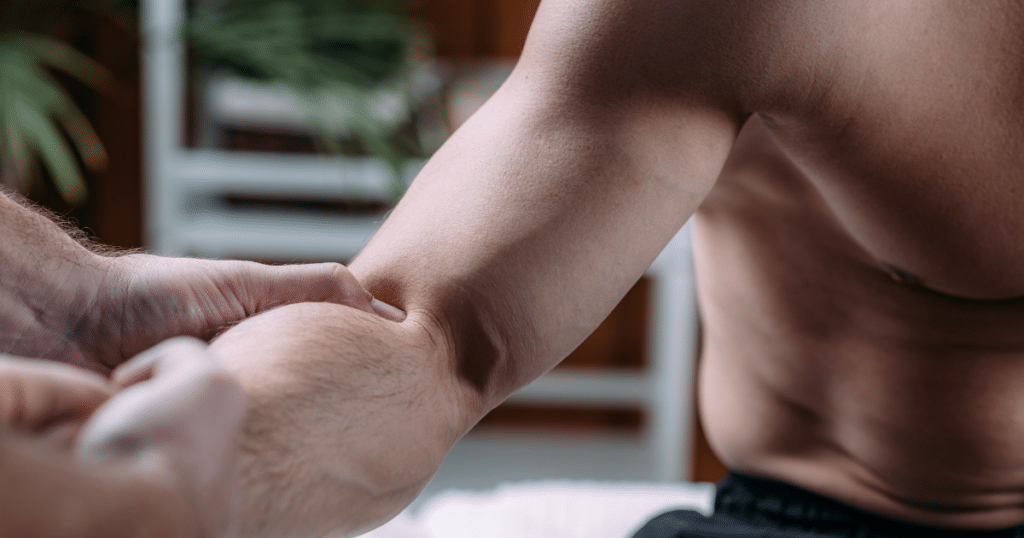
I wish there was a solid answer for this, but it’s yes and no—it ultimately comes down to how bad your tennis elbow is and the steps you are willing to take to correct the issue. For starters, you should go to the doctor in order to get a proper diagnosis. From there, options will be presented to allow you to choose the direction you wish to go in terms of treatments. The doctor might not even give you an answer and might refer you to go see a physical therapist for their opinion. Either way, you will have laid out in front of you a few different options.
Worst case scenario, you are going to need surgery to fix your tennis elbow. However, this is a last resort if other options provide no relief. And you will also find many surgeons saying NOT to go through with the surgery it, itself, could have complications that might limit your range of motion as well as create other problems.
The second to last line of defense would be cortisone injections. This method is where a steroid is injected into the area to help with the inflammation. You hear this most commonly used in professional sports where athletes get injured and rather than resting, they get cortisone shots to get back in the game. I, personally, think going this route is a poor choice. It’s a temporary fix that has no guarantee that it won’t come right back. Some people say they had relief for around six months and then the pain came back with a vengeance. You’re really hiding the problem here rather than trying to fix it. In fact, if you’re anything like me, if something feels better, you’re going to get right back after the weights and piling the plates on. Doing this is a sure way to further injure the area and possibly cause even more damage that could require surgery.
For those who aren’t into needles and surgery, there are some things you can do at home. Again, don’t simply skip going to the doctor and utilize these suggestions as your injury might require a different action than what I’m about to get into. For starters, stop doing reverse curls and upright rows. These two exercises are known for exacerbating tennis elbow. Also, if you are doing an exercise that causes pain in the affected area, discontinue that exercise.
Stretches should be your friend during the day. Your doctor or physical therapist will give you exact stretches you should be performing and will probably ask you to complete them around five times each day. Stretches should be completed without taking it to the point of pain. You should also feel some relief almost immediately after completing the stretches.

A doctor or physical therapist will also give you some strengthening exercises to complete. This can be anywhere from two or more exercises to strengthen the wrist extensors of the forearm. These exercises will be done using a light weight and can generally be done at home. It’s important to follow the guidance laid out by your doctor or physical therapist to ensure proper recovery from tennis elbow.
It’s recommended to stop weight training for a little until you can get your tennis elbow under control so you don’t do further damage. Taking some time off will also allow the rest of your body adequate time to rest and completely recover as well. Once you start getting back into lifting, it is wise to take it easy and slowly work your way back up in weight. Don’t simply throw three wheels on each side of the bar and start going to town. Now would also be a great time to check your ego at the door. Your ego could cause you to re-injure the area. Progress slowly and make sure you are using proper form on all exercises.
The last thing you might want to consider when you are looking to cure nagging tennis elbow would be through the use of a supportive device such as a counter force strap or tennis elbow brace. These can be purchased online at websites such as Amazon or at a local retail store such as Dick’s Sporting Goods, Wal-Mart, or Target. When you start exercising again, you might even want to consider utilizing a neoprene elbow wrap/brace and possibly some wrist straps to take the pressure off of your forearms. Obviously, it would then be wise to do exercises specific to the forearms, only with a lighter than usual weight.
Train Smaller Muscles to Prevent Injuries
We all seem to enjoy hitting the larger muscle groups to impress the ladies and build a muscular physique. People want to hit their upper body as often as possible. However, injuries can creep in such as tennis elbow as well as rotator cuff injuries if you aren’t strengthening those smaller muscles as well. I’m sure if I had a room full of bodybuilders from beginners to advanced, and asked them how many worked their rotator cuff specifically that a small portion of them would raise their hand. This is a problem. We are too concerned with the larger muscles when in actuality the smaller ones are generally the muscles that when injured can royally screw us all in the gym and with day to day activities. Don’t lose sight of the big picture, be sure to train your smaller accessory and stabilizing muscles as well during your training sessions for stability and longevity.


*Disclosure: This article may contain affiliate links or ads, which means we earn a small commission at no extra cost to you if you make a purchase through these links. These commissions help support the operation and maintenance of our website, allowing us to continue producing free valuable content. Your support is genuinely appreciated, whether you choose to use our links or not. Thank you for being a part of our community and enjoying our content.
PLEASE CONSIDER SHARING THIS ON YOUR SOCIAL MEDIA TO HELP OTHERS LEARN MORE ABOUT THIS TOPIC.


